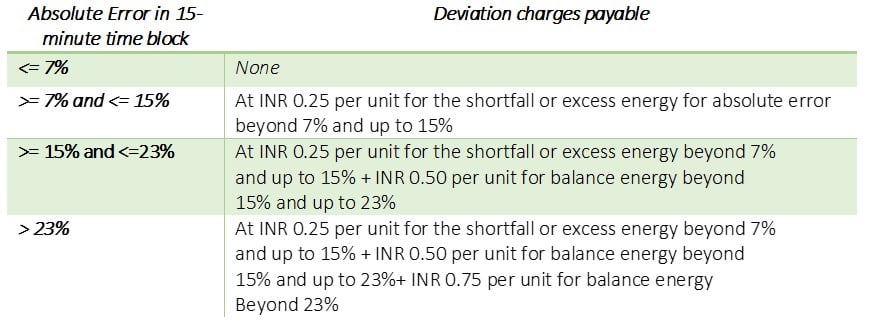Context
Due to the intermittent nature of renewable energy, forecasting and scheduling of power is essential to maintaining the stability and safety of the electricity grid. Since 2017, state electricity regulatory commissions have issued forecasting and scheduling regulations that provide the mechanism by which developers shall be penalised in case they deviate from the declared generation beyond a certain level (typically +/- 15%). This mechanism is called Deviation Settlement Mechanism (DSM). A developer or a Qualified Coordinating Agency[1] (QCA), on behalf of the developer, is typically required to forecast and declare day and week-ahead renewable power generation for each pooling station[2] or each generating station. Each developer is then allowed six revisions on the day ahead schedule in close coordination with the load despatch agency.
Relevance & Impact
The DSM regulations pose revenue risk for renewable energy developers, especially in states with relatively higher DSM charges (INR 0.5 - 1.5 per unit of excess or shortfall of power declared). This may push the developers to factor in these costs in to the electricity tariffs being quoted in renewable energy bids.
As of June 2019, Gujarat, Maharashtra, Uttar Pradesh, Punjab, Telangana, Haryana, Andhra Pradesh, Tamil Nadu and Meghalaya have notified regulations for forecasting, scheduling and deviation settlement for wind and solar generation.
Who should care
- Renewable energy developers and investors
- Qualified Coordinating Agencies
- State Electricity Regulatory Commissions
Case study
Table 1: Deviation charges for solar power for Gujarat

References
- [1] Qualified Coordinating Agency means the mutually agreed agency registered to act as coordinating agency on behalf of renewable energy generators connected to a pooling station/sub-station and may be one of the generators
- [2] A pooling station means the sub-station where pooling of generation of individual renewable energy generators is done for interfacing with state transmission or distribution utility
